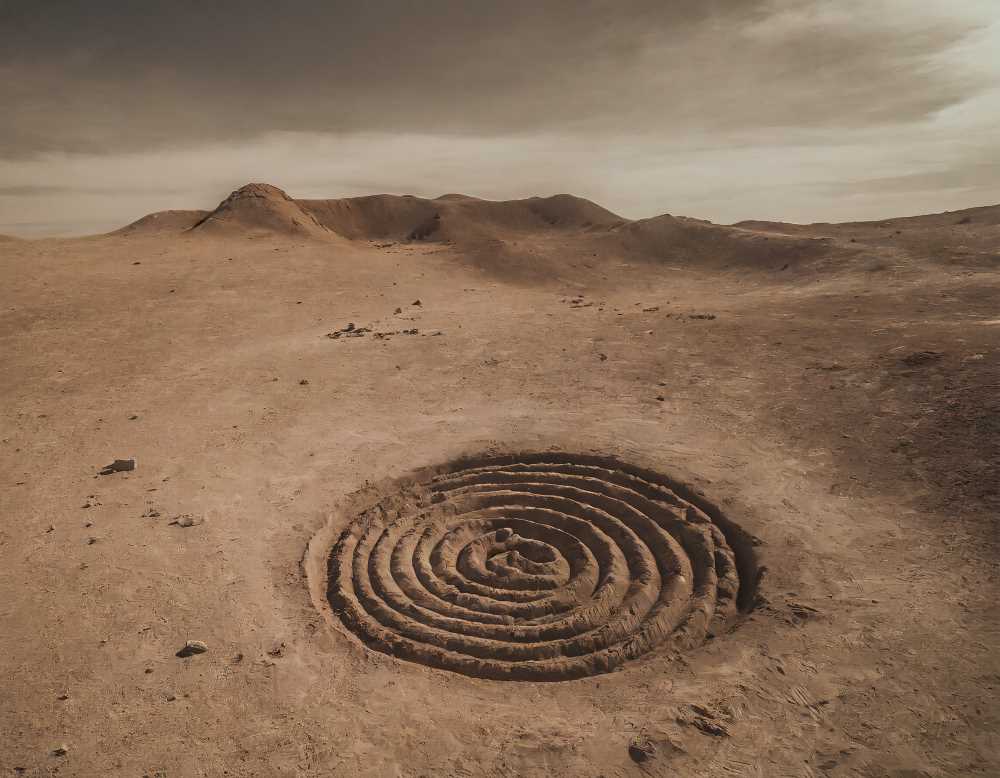Martian Secrets Hiding in the Mexican Deserts?
UNAM researcher Pavel Ulianov Martinez Pabello is using Mexican desert rocks to uncover clues about Martian life. These varnishes might hold the secrets to biomarkers, adding a quirky twist to interplanetary exploration.

Ladies and gentlemen, hold onto your space helmets because we've got a thrilling adventure unfolding that's taking us from the dusty deserts of Mexico to the Martian frontier! Meet Pavel Ulianov Martinez Pabello, a young and brilliant researcher from UNAM's Institute of Geology, who's about to take you on a quirky cosmic journey.
It all began when Pavel, a dedicated disciple of astrobiologist Rafael Navarro González, decided to join forces with a European project led by the Astrobiology Center in Madrid. Little did he know that his research would soon be making waves in NASA and ESA's Mars Sample Return mission. But how on Earth (or Mars, rather) does this young researcher from Mexico fit into this interplanetary puzzle?
Well, the game plan is to assemble a collection of rock samples that are Mars-like, including some all the way from the Mexican desert. You heard it right, amigos. Mexican deserts, with their “dark crusts” or desert varnishes, are now starring in a cosmic treasure hunt. These rocks are believed to be analogous to those on the red planet and have the fantastic ability to hold onto biomarkers, which are molecules that scream “Life was here!” To put it simply, they're like the breadcrumbs left behind by a hungry Martian explorer.
For four adventurous years, Pavel, who's not just a researcher but also a professor at the National School of Earth Sciences, has been delving deep into the world of these desert varnishes. These peculiar “dark crusts” can retain biomarkers, the Martian detectives' best friends. Think of them as cosmic fingerprints, pointing straight to signs of life.
Now, let's get to the nitty-gritty because Pavel's work is not just about picking up rocks and hoping for clues. No, no, he's a true Martian Sherlock, investigating the varnishes in the deserts of Chihuahua, Sonora, and Nuevo León. But here's the kicker: he's not using a magnifying glass; he's employing the same mind-boggling analytical techniques that the Martian rovers use. It's like cosmic CSI, only with Martian rocks.

So, what's the scoop, you ask?
Pavel's research is revealing some astounding secrets. First off, these varnishes are found in various types of rocks, which is a bit like discovering your lost car keys not just in your living room but in the bathroom, too. In other words, they're not picky about their hosts.
Although the tests can't shout “Alien life found!” just yet, the mere presence of these varnishes in all the samples hints that they might be offering shelter and sustenance to Martian microorganisms. It's like having a universal Airbnb for extraterrestrial guests!
If you're wondering why this research is such a cosmic jackpot, think back to the Apollo Missions. When those fearless astronauts went gallivanting on the Moon, they brought back kilos of lunar rocks, like souvenirs from a celestial gift shop. These rocks became invaluable in understanding the Moon's history, and some even ended up on display at places like UNAM's Science Museum, Universum.
Pavel's work opens up a whole new world of possibilities, showing us that the sands of Earth could help unlock the mysteries of the Red Planet. But it's not just about big, fancy laboratories and billion-dollar missions. It's a testament to the passion of researchers who've chosen to follow their scientific dreams and dare to dream of distant worlds.
In Pavel's own words, “I will dedicate my academic life to continue with this exciting line of research.” So, stay tuned, folks, because the next time you admire those desert varnishes while hiking in Mexico, remember, they might just hold the key to uncovering life on Mars.




